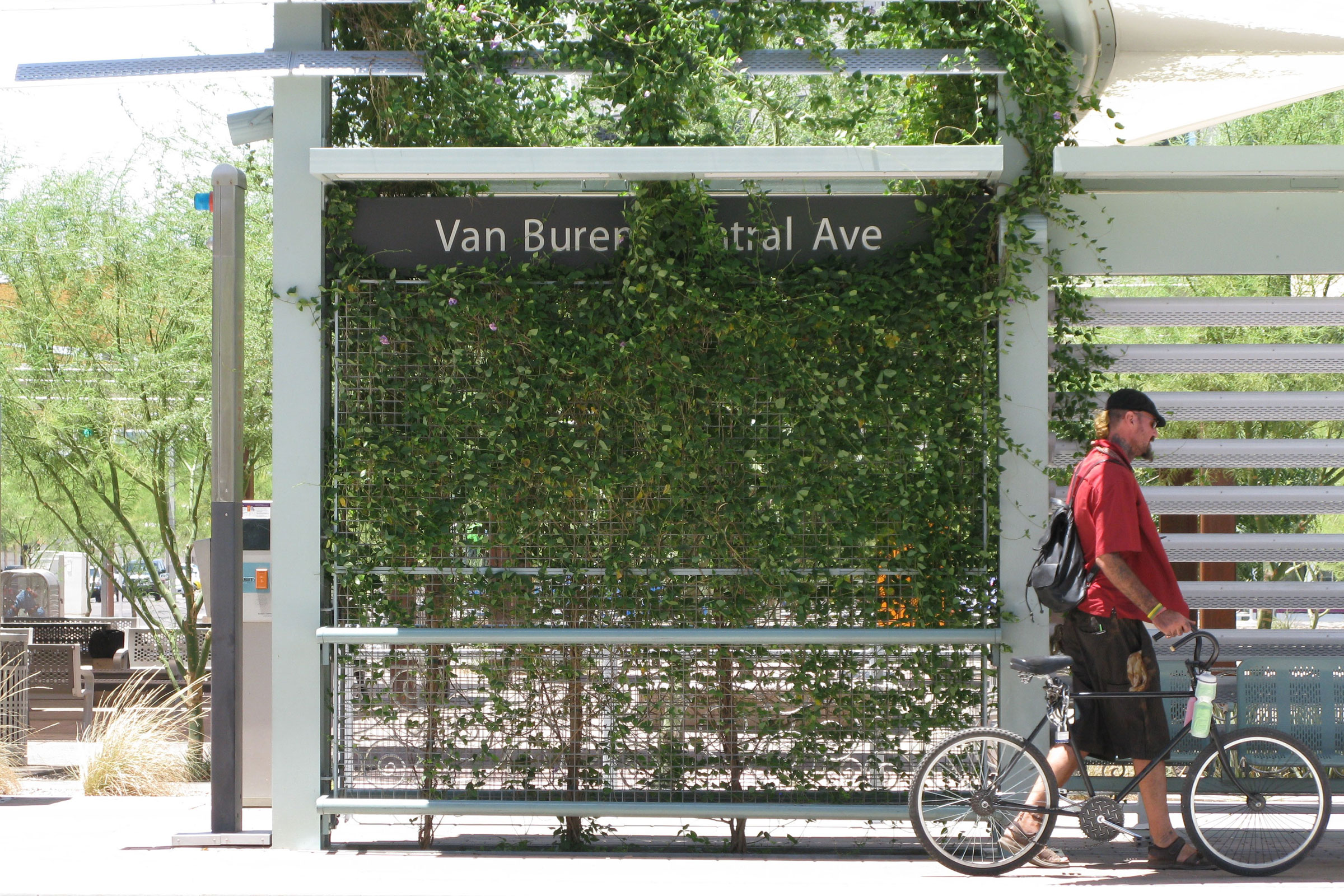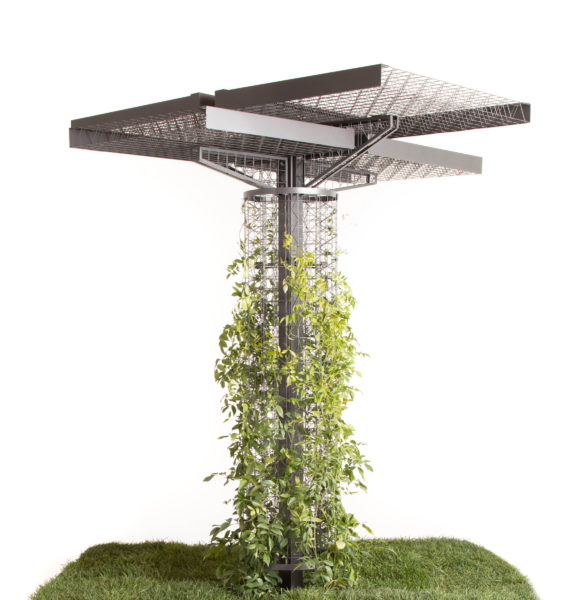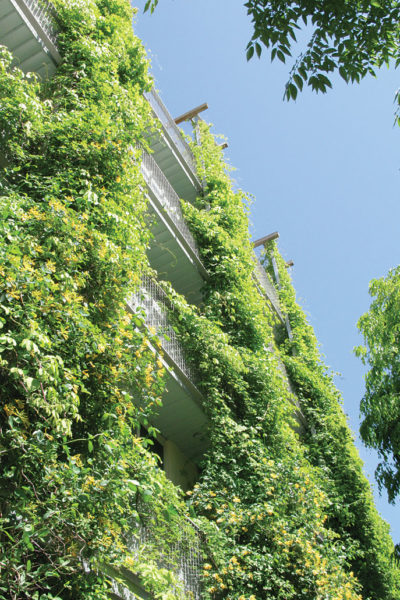It’s been one long, dark year since the world has been at home due to pandemic restrictions, but there are signs that optimism is returning, especially with spring and summer right around the corner.
In Los Angeles, for example, outside seating for restaurants has recently reopened, along with other services and businesses at limited capacity, and there is ongoing discussion of reopening schools in the coming months.
As businesses begin to reopen, it’s time to think about making public spaces and buildings as healthy as possible, keeping in mind that another pandemic could come along at any time. One part of the solution is greening not only our immediate surroundings and interstitial spaces but also our outdoor environment, especially in urban areas. Here’s how green facade design can lead to healthier spaces.
Green Facade Strategies for Reopening Businesses
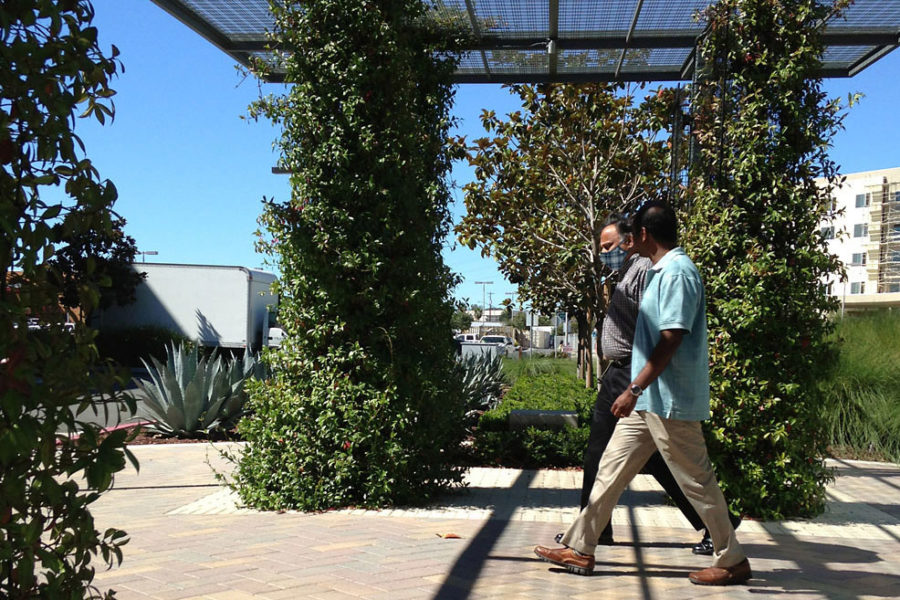
Photo courtesy of greenscreen
One of the few pleasures of the pandemic has been discussions around adding greenery to our homes and businesses. Instagram and YouTube are now full of plant influencers to help with our home offices, as many of us have shifted from commuting to work to working in place. Studies have shown that the addition of plants in our home lives and businesses has caused many of us to feel happier and more productive.
But what happens if and when we return to the office? And when we are able to eat inside restaurants, go to sports and music events, and spend time wandering public gardens?
We all want a healthy workplace that addresses issues such as air quality, lighting, and adding space around and between us. We also want to enjoy the benefits of biophilic design, which means adding natural elements into the spaces where we work and live. This provides the added pleasure of experiencing a variety of greenery on and around businesses, entertainment venues, and outdoor spaces.
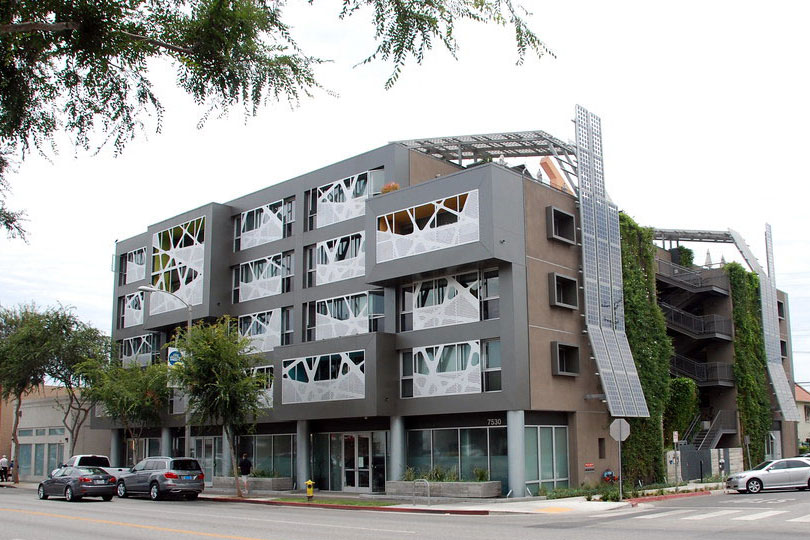
Photo by Michael Locke
Restaurants in many cities are focused on socially distanced dining both indoors and outdoors. Now more than ever, restaurants have set up seating on the sidewalk that even spills out onto the parking spaces in the street. Outdoor patio spaces with tables set at least 6 feet apart and equipped with space heaters are common. These scenarios are utilitarian at best. Let’s define the new normal with both health and aesthetics as the goal.
Vertical trellis panel and planter combinations can divide spaces and provide a planted alternative to plastic and concrete barricades, plexiglass, or other hard surfaces. Planters with trellis panels can sit between a diner and the street to serve as a vertical vegetated surface that screens out cars driving past while filtering the air, or position them between diners on a patio to provide privacy and filter out sound. They can be used to define a streetscape or walkway to provide distance between pedestrians or to provide a barrier against traffic.

Photo courtesy of greenscreen
The panel/planter configurations are often used on rooftops and in courtyards to screen mechanical equipment and provide boundaries for public spaces or to create outdoor rooms. Additionally, products such as greenscreen’s “tree” and column wraps with overhead panels can create shade, filter light, and cool the air. Planted panels can be used as infill in existing or new structures which can not only create shade but also can provide privacy and mitigate views. Trellis panels can be customized to meet many types of project requirements: They can be cut at angles, notched, curved, and corners can be mitered.
- Photo courtesy of greenscreen
Green Facade Strategies for Overall Health
It is more important than ever to provide cleaner air to breathe as pre-existing and chronic health conditions can cause serious disease, especially in the face of COVID-19. Over the past year, there is more awareness that our current lifestyle, at least in cities, is not sustainable for long-term health and well-being. And because so many more people are working from home, the need for walking space and neighborhood green spaces is at the forefront.
It is likely that the shift from commuting to an office to working at home will have lasting effects on our communities. There are multiple changes that have already happened: permanent reassignment of some streets to pedestrian-only walking streets; implementation of “slow streets” policies to reduce commuter traffic in residential areas and business districts; changing lanes of automobile traffic to bike-only lanes; parking lot conversions to green spaces like parklets and pocket parks; and providing unused urban spaces for community gardens.
These interventions can lead to a significant increase in green infrastructure and space for pedestrians since fewer cars are on the road. Increased greenery cools down the atmosphere and allows for more retention of rainwater into the soil. More green space provides the opportunity to produce food. It also gives those living in a neighborhood that adopts these measures more room to exercise and stay active.

Photo courtesy of Branded Content Media for greenscreen
Other innovative means for addressing the recovery from the pandemic include the C40 Mayors’ Agenda for a Green and Just Recovery. The main goal is to provide steps for an equitable and sustainable recovery in cities around the world by creating new green jobs, supporting essential workers, training workers, delivering safe mass transit, and giving public space back to people and nature. This includes the creation of 15-minute cities where the goal is to have all essential services within a 15 minutes’ walk of any resident in the neighborhood. Infrastructure will have nature-based solutions.
One important piece of green infrastructure is green facades. greenscreen trellis panels can be attached directly to a building wall as a retrofit solution for existing structures. The same panels can also attach to posts or other types of steel structures as a freestanding element. These welded wire panels weigh less than a pound per square foot and have a 3-inch thickness, which is ideal for growing vines up from the ground to populate the panel without adding much weight to the building envelope.
- Photo courtesy of greenscreen
What Better Time to Act than Now?
Chris Kennedy from Urban Systems Lab reported that the majority of survey respondents in New York and the US found that parks and green spaces are deemed as either “important” or “extremely important” when it came to decreasing stress and staying active during the pandemic quarantine.
The need for more urban green space to promote physical and emotional well-being is clear. David Barton from the Norwegian Institute for Nature Research said in a recent article, “prior to COVID-19 we didn’t appreciate how much these spaces work as refuges. COVID-19 has highlighted existing social inequities in urban populations, and we have found that those who have been most exposed and at risk from COVID-19 are also the same groups of people that have restricted access to sufficient green space.”
The Organisation for Economic Co-operation and Development (OECD) gives the following statement: “Cleaner air quality, healthier water, effective waste management, and enhanced biodiversity protection not only reduce the vulnerability of communities to pandemics and improve resilience, but have the potential to boost economic activity, generate income, create jobs, and reduce inequalities.” The report by Arup also provides more information on green infrastructure in five major global cities.
There is momentum to create public and private spaces that are healthier, decrease stress, allow for physical activity, and increase emotional resilience but this interest may wane once the pandemic passes. John Trusler says it best: “No time like the present, a thousand unforeseen circumstances may interrupt you at a future time.”

